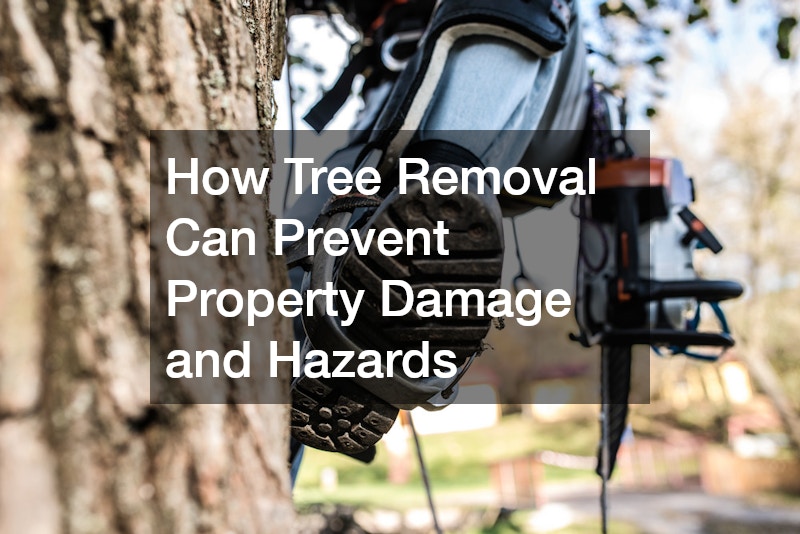In this article, we explore the crucial role of tree removal in mitigating potential risks to property and personal safety. Trees, while essential for the ecosystem, can pose significant hazards when improperly maintained or when their growth goes unchecked. Understanding the potential dangers and benefits of tree removal helps property owners make informed decisions for landscape management.
Why is Tree Removal Important for Property Safety?
Preventing Structural Damage
When tree roots grow too close to a home’s foundation, they can cause cracks and instability. Over time, this root growth can be detrimental to the structural integrity of buildings. Additionally, heavy branches or entire trees can fall during storms, causing roof and vehicle damage that leads to costly repairs.
Tree roots often spread widely underground, and when they exert pressure on driveway surfaces, sidewalks, or other structures, they can cause elevation or cracking. This can lead to uneven surfaces, which pose tripping hazards and reduce the aesthetic appeal of a property. Thus, tree removal might be necessary when root systems become invasive.
In cases where trees are too close to critical structures, removing or trimming them can be the best option. This proactive measure prevents the potential weakening of nearby buildings due to root extension. It also ensures that larger trees won’t have the chance to damage vehicles parked nearby or endanger residents and visitors.
Avoiding Power Line Interference
Trees growing into power lines can be exceptionally dangerous, posing risks of electrical outages and potential fires. Utility companies frequently perform assessments to identify trees that require trimming or removal to prevent interference. Falling branches can snag lines, leading to electrical hazards that threaten entire neighborhoods.
Power interruptions caused by tree-related issues are more than a simple inconvenience. They can disrupt homes, businesses, and essential services, causing significant economic impact. Therefore, maintaining a clear zone around power lines is crucial for consistent and safe electricity delivery.
Preventive tree removal or trimming can avert these accidents, ensuring that public safety isn’t compromised. This proactive approach also minimizes maintenance costs for utility providers, which often translates into fewer rate increases for consumers. Moreover, timely intervention can prevent tragic accidents, such as fires ignited by live wires tangled in tree limbs.
How Do You Know When It’s Time to Remove a Tree?
Visible Signs of Disease or Decay
Diseased trees often show visible symptoms such as discolored leaves, fungi growth, and hollow trunks, indicating health issues. These symptoms not only reduce the tree’s vitality but can also signal a potential collapse. Healthy and vibrant landscapes depend on addressing these signs promptly, which sometimes necessitates tree removal.
Ignoring the presence of disease can allow it to spread to other trees and plants in the vicinity, impacting the broader ecosystem. In some instances, consulting with an arborist can determine whether treatments or interventions can save the tree. However, removal is often the recommended action to prevent further environmental damage.
Proactively managing tree health involves regular inspections and a willingness to take corrective action when needed. Homeowners should familiarize themselves with common disease indicators to foster resilient green spaces. Recognizing when a tree can no longer be saved is key to sustaining landscape health and avoiding potential hazards.
Signs of Structural Instability
Structural instability in trees appears as leaning trunks, cracked soil, and exposed roots. Such signs increase the risk of the tree falling unexpectedly, which can lead to severe property damage or personal injury. Regular assessments by professionals can help in determining whether removal or support structures like cabling are needed.
Leaning trees, especially those that tilt sharply, generally indicate root system issues or soil erosion. As a tree loses its grip on the soil, it becomes more susceptible to toppling in adverse weather conditions. Timely removal becomes essential in preventing such dangerous scenarios and protecting nearby structures.
Exposed roots and cracked soil might suggest that the tree is no longer securely anchored to the ground. In such cases, the structural risk posed by potential tree collapse necessitates careful evaluation. Property owners should prioritize these assessments to ensure landscape safety and minimize unexpected damages.
Tree removal, when done responsibly, can significantly reduce the risk of property damage and personal hazards. Regular assessments and proactive management ensure not only safety but also the health of surrounding plant life and ecosystems. By being attentive to the signs that indicate a need for tree removal, property owners can protect their homes and enhance their landscapes effectively.
.


